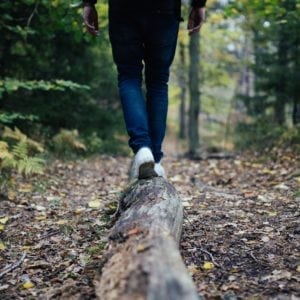Thinking Holistically Can Change The World
This is an email I just wrote to our Advanced Students. I read several different things this morning that came together in my mind as an illustration of holistic herbalism, and it got me really inspired. When I get inspired, I naturally want to share it with our students, and since this kind of holistic thinking is such a big part of their work in learning to work with clients, and since I’m always looking for new ways to talk about big concepts, I was excited to write to them. And then I thought – maybe it would get YOU really inspired, too!
So here you go:
Holistic Thinking Matters
Subject: The Whole Enchilada
Hello, Awesome Herbalists!
I really wanted to make enchiladas this week, but no one had the nice tortillas that I like to get. So, I didn’t.
But, this email isn’t really about enchiladas – it’s actually about how we think about – well, basically everything – as holistic herbalists. And also as just people!

She’s talking about how the problem in shin splints is actually caused by the back of the leg being too tight, which isn’t what we usually think about as a culture thinking about shin splints (like you do!). And at the end, she wrote this:
The other moral of the story is this: We keep teaching (and learning) anatomy (i.e. muscle action and joint positions) without teaching the physics that govern them. You cannot memorize anatomy. You must be able to deduce “what a muscle does” every time, depending on what all the other muscles were doing just before you started to analyze, the position of the entire human body relative to the ground.
Whoa. Maybe go back and read that again. It’s good stuff.
That thought cross referenced (in my mind) a book I’m reading right now called Behave, by Robert Sapolsky. It’s about neuroendocrinology, and sociology, and psychology, and basically the utter and complete intertwinedness of basically everything, and using that to understand why humans behave the way they do, and from there, how we can approach supporting mental health. His foundational premise is, human behavior is complex and we CAN understand it, but we can’t reduce it to something isolated and simple.
Or in other words, you can’t silo science.
Or in other words, in order to understand anything, you have to think holistically.
I’m really excited to see more and more scientists talking in more holistic, systemic ways, because the reality is that we are complex systems embedded in other complex systems (us as individuals in the larger context of our communities in the larger context of our world…). For a long time, Science(tm) has told us that in order to understand how anything works, you have to reduce it down to THE ONE THING. Because complex systems have too many variables, because we have to know what thing got the return on investment, because it’s too hard to design experiments in complex systems without including human interpretation, because…

Let’s go back to Katy’s quote:
The other moral of the story is this: We keep teaching (and learning) anatomy (i.e. muscle action and joint positions) without teaching the physics that govern them. You cannot memorize anatomy. You must be able to deduce “what a muscle does” every time, depending on what all the other muscles were doing just before you started to analyze, the position of the entire human body relative to the ground.
I would add to this (and so would she, it just doesn’t happen to be in this particular quote) that you have to deduce what a muscle (or a person) does every time depending on what all the other factors were doing just before you started to analyze, and also, days and weeks and months and years before you started to analyze. Because in the case of shin splints, that back line tension was created over a long time of habitual behaviors, and that’s true also of everything else: diabetes is caused over a long time of habitual behaviors, and emotional health is influenced by a long time of habitual behaviors, and …

And the bigger excitement in all of this is the way that these ideas can grow and expand beyond just our own personal health stories.
The more places we see these ideas reflected, the more that people start practicing thinking this way (and it does take practice, because we’ve all been raised in a culture that deifies The One Root Cause), the more we can start applying them not just at the individual health level, but at the community level, and at the society level – and then we can affect REAL change!
love and dandelions,
katja
This is at the core of everything we teach.
It’s why we made the Four Keys to Holistic Herbalism minicourse free for everyone, because we really want to help people start to develop this way of thinking. We teach every class in our programs from this perspective – and we’re hoping that it not only helps you have a better, deeper understanding of how to build a strong, healthy you, but frankly, that it changes the world.

Join our newsletter for more herby goodness!
Get our newsletter delivered right to your inbox. You'll be first to hear about free mini-courses, podcast episodes, and other goodies about holistic herbalism.
